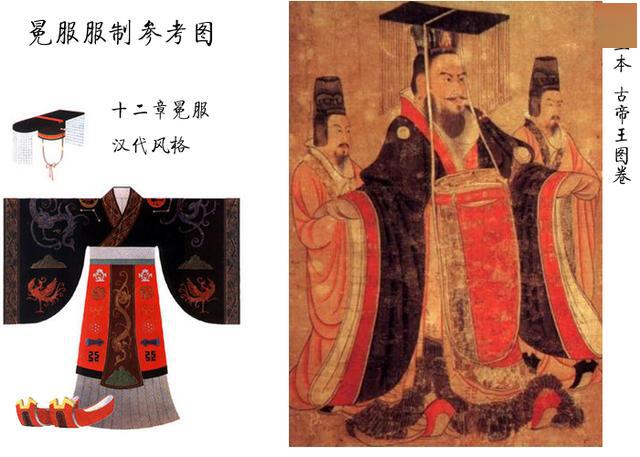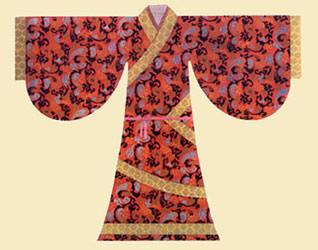2. Apparels and Costumes
Clothing is a symbol of a nation’s economic and cultural development, reflecting national consciousness and the characteristics of the times. Chinese clothing holds a significant place in Chinese culture and is an important part of Chinese civilization. It showcases the traditional fashion aesthetics of Chinese Han people and Chinese minorities and was shaped through Chinese dynastic traditions, ethnic integration, and foreign influences. Overall, the primary functions of clothing are protection against the cold, modesty, and decoration, reflecting the different stages of the development of clothing culture.
Ancient Chinese Clothing
According to the legend, it’s Yellow Emperor who invented the Chinese clothing. In ancient China, clothing of Chinese people who mainly were Han ethic group, carried strong sentiments of unity and strict hierarchical concepts. Each dynasty established clear and strict regulations regarding the attire of different social classes, emphasizing that one’s dress should correspond strictly to their social status and identity. As a result, clothing in ancient China was not a reflection of personal freedom and individuality but a symbol of hierarchy and propriety. This characteristic underscores the essence of ancient Chinese attire.
During the Western Zhou period (1029 BC – 771 BC), the hierarchical system of clothing gradually matured, forming the ceremonial attire system centered around the “Emperor’s ceremonial robes.” The ceremonial robes (冕服 mian fu) were the most prestigious attire, characterized by complex structures and intricate decorations, each symbolizing significant meanings. They were worn by the emperor, feudal lords, and others during important rituals such as sacrificial ceremonies to Heaven, Earth, and ancestors.

Mian Fu, 冕服 the ceremonial robe
Han dynasty (206 BC – 220 AD) was one of the heydays in ancient Chinese, and Han gradually evolved from a title of a dynasty towards a name of the biggest group of Chinese ethnic group. When we discuss the traditional Chinese clothing, we normally mention the Hanfu, the traditional clothing of the Han people. Hanfu is composed of yi (衣 upper garment), chang (裳 lower skirt), headgear, hairstyle, face ornaments, shows, accessories, and etc. There are two types of yi (衣), one is the kind with the separation of the upper and the lower garments (上衣下裳 shang yi xia chang), while the other is the one-piece kind that unites the upper and the lower garments together (深衣 shen yi). The major features of yi are 交领右衽(jiaoling youren, wrapping the right side over before the left) and 宽袍大袖 (kuan pao da xiu, closed full-body garment with wide and loose sleeves). 冠 (guan) indicates the crown and its related accessories on head. In ancient China, both men and women have long hairs. When men come to 20 years old, they need to participate in the crowning ceremony (冠礼 guan li) to officially wear adult hats. Correspondingly, when women come to 15, they need to have the pinning ceremony (笄礼 ji li) to celebrate their adulthood.

Shen Yi 深衣 one-piece clothes
Nowadays, the traditional clothing in East Asian countries, such as Japanese Kimono, Korean Hanbok, has absorbed the features of Chinese traditional clothing to a certain extent. Recent years, more and more Chinese young people prefer to wear Hanfu in public as their daily clothes as the trend of the revival of Hanfu.

